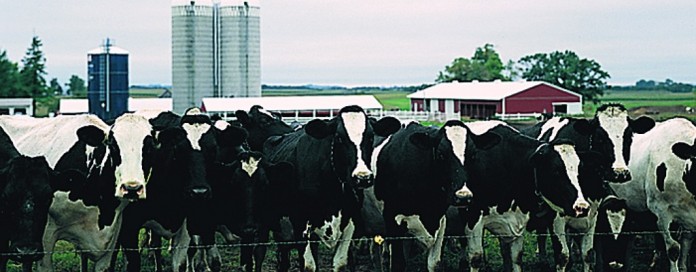When you don’t feel well, soup is the go-to meal to help you feel better, or at least, not worse. The dairy industry hasn’t felt well for a while now (understatement, anyone?), but we are being served a bowl of alphabet soup that can help a bit: CARES, PPP, EIDL, CFAP, CCC, FSA, SBA. There are lots of letters floating in that bowl, so let’s take it a spoonful at a time.
PPP
As of last week, there were still funds available for the Paycheck Protection Program.
This program, authorized by the CARES Act (Coronavirus Aid, Relief and Economic Assistance Act) is administered through the SBA (Small Business Administration) to assist small businesses, including farms, cover up to two and a half months of payroll expenses, as well as your income, if you operated as a sole proprietorship, with a low-interest loan.
If certain criteria are met, some or all of the loan may be forgiven. Farms must apply through an SBA-approved lender. Find approved lenders and more information at sba.gov.
EIDL
The Economic Injury Disaster Loan is another CARES-authorized SBA program which is currently open only to farm applications at the sba.gov website.
Farm businesses and agricultural cooperatives with no more than 500 employees may apply for EIDL, which gives loans up to $2 million for businesses that suffer economic injuries due to COVID-19. An “emergency advance” component provides an advance of up to $10,000 even if the loan is not approved.
The advance may be forgiven if the farm does not also have a PPP loan that is forgiven. Clarification is pending. Approved loans will incur 3.75% interest for terms up to 30 years. Collateral will be required for larger loans. Applications are taken online only.
CFAP
The intent of the Coronavirus Food Assistance Program is to directly assist farms impacted by the effects of the COVID-19 outbreak. Sign-up began at your local FSA (Farm Service Agency) office May 26 and continues through Aug. 28. FSA offices currently work with clients via email, fax and phone by appointment.
Two funding sources are being used for this program, CFAP ($9.5 billion), and the Commodity Credit Corporation ($6.5 billion). The sources and uses are being tracked separately by FSA, but farms will receive a first payment of 80% of the total calculated payment, up to $200,000 per entity.
If there are still funds available, the remaining 20%, or a prorated amount based on remaining funds available, will be paid at a later time. Payments limits have been raised to $250,000 per farm or $750,000 for a farm with multiple entities that meet eligibility requirements.
Dairy markets took a severe beating since January and only recently trended upward in June — and will only actually settle at decent price levels going forward if supply aligns with demand. We cannot keep milking more and more cows.
CFAP Dairy Calculation
Milk produced in January, February and March (first quarter 2020) is eligible for assistance.
The formula for dairy is: first quarter milk production (cwt.) x $4.71/cwt. (CARES rate) plus (first quarter milk production x 1.014) x $1.47/cwt. (CCC rate)
Part two of the equation applies a projected 1.4% production increase.
Example for a herd with 600,000 pounds (6,000 cwt) of first quarter milk:
6,000 cwt x $4.71 = $28,260
(6,000 cwt x 1.014) x $1.47 = $8,943.48
$28,260 + $8,943.83 = $37,203.48
In this example, 80%, or, $29,762.78, will be paid shortly after the application is approved.
These program payments are not subject to sequestration deductions. Dairy prices have taken tremendous hits, which were painfully obvious in the April final milk checks. The Class III milk price of $13.07 is the lowest since April 2010 and even with a positive producer price differential of $1.15, well below cost of production. May will be more of the same.
This program will help with some of the resulting cash shortfall. Clarifications from FSA indicate that dairy cull cows sold in the first quarter and dairy steers are also eligible under the cattle section. Farms that sell grain and other eligible commodities can make application for those commodities as well. Find more information about all these programs at farmoffice.osu.edu.
Dairy farms are facing huge challenges this spring and have to make many unanticipated decisions. Our OSU Dairy Working Group is responding with DIBS (Dairy Issue Briefs) to help inform those decisions. They are posted regularly at http://dairy.osu.edu.













